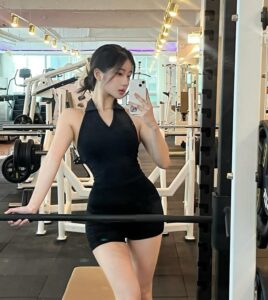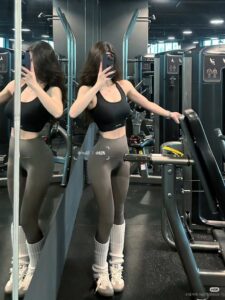From Art to AI: Beautiful Women in Digital Form sets the stage for this enthralling narrative, offering readers a glimpse into a story that is rich in detail and brimming with originality from the outset.
The evolution from traditional art to digital representations of beautiful women opens up a world of creativity and innovation, shaping beauty standards in unique ways. As artists adapt their techniques to the digital realm, a new era of artistic expression emerges, exploring diversity, ethics, and societal perceptions.
Historical Perspective

In the realm of art history, the depiction of women has evolved significantly from traditional mediums to digital forms, reflecting the changing beauty standards and artistic techniques over time.
Evolution of Portraying Women
- Traditional art often showcased women in a more idealized and romanticized manner, focusing on classical notions of beauty.
- With the advent of digital art, artists have been able to explore more diverse representations of women, breaking away from conventional standards.
- Digital platforms have opened up new possibilities for artists to experiment with different styles and interpretations of feminine beauty.
Impact on Beauty Standards
- Digital art has played a role in challenging traditional beauty norms by showcasing a wider range of features and characteristics as beautiful.
- Artists have used digital tools to highlight diversity and inclusivity in their depiction of women, promoting a more realistic and varied representation of beauty.
- The accessibility of digital art has allowed for a democratization of beauty standards, empowering artists to redefine beauty on their terms.
Adaptation of Techniques
- Artists have had to adapt their techniques to suit the digital medium, incorporating software and technology to enhance their creative process.
- From digital painting to 3D modeling, artists have utilized a range of tools to bring their vision of beautiful women to life in the digital realm.
- The blending of traditional art principles with digital innovation has led to a fusion of styles that continue to push the boundaries of beauty representation.
Artistic Techniques

Artists utilize various digital tools such as Photoshop, Illustrator, and 3D modeling software to create stunning digital art pieces. These tools provide a wide range of options for manipulating shapes, textures, colors, and lighting to bring their visions to life.
Lighting and Shading
Lighting and shading play a crucial role in enhancing the beauty of digital women in artwork. By strategically placing light sources and creating shadows, artists can add depth, dimension, and realism to their creations. For example, soft lighting can create a delicate and ethereal look, while dramatic lighting can evoke a sense of mystery and allure.
Color Palettes
Color palettes are essential in conveying emotions and aesthetics in digital art, including depictions of beautiful women. Artists carefully select colors to evoke specific moods or themes in their artwork. For instance, warm tones like reds and oranges can convey passion and intensity, while cool tones like blues and greens can create a sense of calm or tranquility.
The use of complementary colors or monochromatic schemes can also impact the overall feel of the piece, influencing how viewers interpret the beauty of the digital women portrayed.
Representation and Diversity
Representation and diversity play a crucial role in digital art, especially when portraying women. Artists have the opportunity to showcase women from various cultures and backgrounds, challenging traditional beauty standards and promoting inclusivity in their artworks.
Exploring Cultural Representation
- Artists can incorporate elements from different cultures in their digital artworks to celebrate diversity and showcase the beauty of women worldwide.
- By representing women from diverse backgrounds, artists can break stereotypes and promote a more inclusive view of beauty in the digital art realm.
- Using various cultural symbols, clothing, and settings, artists can create unique and authentic representations of women from different parts of the world.
Importance of Diversity in Beauty Standards
- Diversity in portraying beauty standards through digital mediums helps challenge narrow and unrealistic ideals, promoting a more realistic and inclusive view of beauty.
- By showcasing women of diverse ethnicities, body types, and backgrounds, artists can contribute to a more positive and empowering representation of beauty in digital art.
- Embracing diversity in beauty standards can help individuals see themselves reflected in art, fostering a sense of belonging and acceptance in the digital art community.
Promoting Inclusivity in Digital Art
- Artists can challenge stereotypes and promote inclusivity by consciously including women from underrepresented communities in their digital artworks.
- Creating art that celebrates the uniqueness and diversity of women can inspire others to embrace their own individuality and appreciate the beauty in differences.
- Through intentional representation and storytelling, artists can influence societal perceptions of beauty and encourage a more inclusive and accepting environment in the digital art space.
Ethical Considerations

In the realm of digital art depicting beautiful women, ethical considerations play a crucial role in shaping societal perspectives and values. Artists hold a responsibility to portray women in a respectful and empowering manner, steering clear of objectification and harmful stereotypes.
Let’s delve deeper into the ethical concerns surrounding the representation of women in digital art and the potential impact on societal perceptions of beauty and femininity.
Objectification of Women
- Objectification of women in digital art reduces them to mere objects of desire, undermining their value as individuals.
- Artists should strive to depict women as multidimensional beings with agency, rather than perpetuating unrealistic beauty standards.
- By avoiding the objectification of women, digital art can promote a more inclusive and empowering representation of femininity.
Responsibility of Artists
- Artists have a responsibility to challenge societal norms and stereotypes through their portrayal of women in digital art.
- By depicting women in diverse roles and with varied characteristics, artists can contribute to a more inclusive and representative art landscape.
- Empowering representations of women in digital art can inspire positive societal change and promote gender equality.
Impact on Societal Perceptions
- Digital art has the potential to shape societal perceptions of beauty and femininity by offering alternative narratives and perspectives.
- By showcasing a diverse range of women in digital art, artists can challenge traditional beauty standards and foster a more inclusive definition of beauty.
- Through thoughtful and respectful depictions, digital art can influence how individuals perceive and appreciate the beauty of women in all their forms.
Final Conclusion
From Art to AI: Beautiful Women in Digital Form encapsulates a journey through the realms of art and technology, showcasing the transformative power of digital mediums in portraying beauty. As we navigate the landscapes of representation, diversity, and ethics, the impact of digital art on societal norms becomes increasingly evident, shaping the way we perceive beauty and femininity in the modern age.
FAQ Guide
How has digital art influenced beauty standards?
Digital art has redefined beauty standards by offering a platform for diverse representations and challenging societal norms through innovative techniques and approaches.
What role do color palettes play in conveying emotions in digital art?
Color palettes in digital art serve as powerful tools to evoke emotions, set moods, and enhance the overall aesthetics of the artwork, adding depth and meaning to the portrayal of beauty.
How can artists promote inclusivity in their digital artworks?
Artists can promote inclusivity by representing women from various cultures and backgrounds, challenging stereotypes, and depicting diversity in a respectful and empowering manner, thus fostering a more inclusive narrative in digital art.
What ethical concerns are associated with the portrayal of women in digital art?
Ethical concerns in digital art revolve around issues of objectification, stereotyping, and promoting unrealistic beauty standards. Artists have a responsibility to depict women respectfully and empoweringly, contributing to a more ethical and inclusive artistic landscape.


